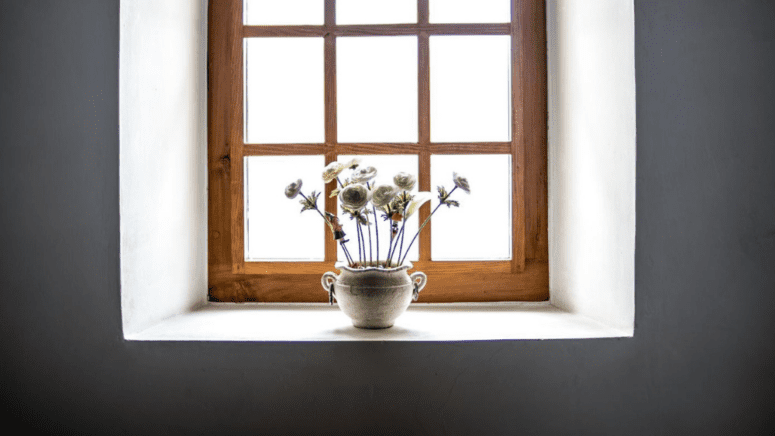Do New Windows Increase Property Value? Energy Efficiency Matters
- Published on
- 5 min read
-
 Emma Diehl, Contributing AuthorClose
Emma Diehl, Contributing AuthorClose Emma Diehl Contributing Author
Emma Diehl Contributing AuthorEmma's work has been featured in Huffington Post, NPR and XOJane. When she's not combing her neighborhood for open houses, she's writing about technology, real estate or data.
-
 Alexandra Lee, Associate EditorClose
Alexandra Lee, Associate EditorClose Alexandra Lee Associate Editor
Alexandra Lee Associate EditorAlexandra is an associate editor of HomeLight.com. Previously, she served as a writer and social media manager at Santa Barbara Life & Style Magazine, in addition to interning at the nonprofit honors society Phi Beta Kappa. Alexandra holds a bachelor's degree in communication and global studies from UC Santa Barbara, and she has three years of experience reporting on topics including international travel, luxury properties, celebrity interviews, fine dining, and more.
They say kitchens and baths sell homes. But when was the last time you thought about your windows and how old they’re getting?
“I was dealing with buyers the other day who were willing to cancel a deal because of the substantial cost of window replacement,” says Michelle Minik, a top agent who sells 70% more homes than her competitors in the Goodyear, Arizona market. In Minik’s experience, sellers don’t even consider the condition of their windows until the inspection, when they’re faced with significant repairs and a huge expense.
Rather than ending up like the folks in this situation — starting from square one with a broken contract and shabby windows to boot — stay ahead of the curve with this guide to adding value to your house with new windows.
This project isn’t small. Or cheap. Or as dramatic as a chef’s kitchen makeover. That doesn’t mean you can put it off forever. We’ll answer your biggest questions (do new windows increase home value, and by how much?), offer tips for noticing windows on their last leg, and help you maximize your window investment with smart material selections.
How much value will new windows add to your home?
There are lots of factors, including where you live and whether you go for a midrange or upscale variety, that impact how much windows cost and what you’ll recoup from your spend. However, this is what the straight-up data says.
According to HomeAdvisor, which uses data from thousands of home professionals to report on home improvement costs, a single-window replacement cost can fall anywhere between $300 and $2,100. That doesn’t account for custom or nonstandard-size windows, such as bay windows, which can inflate the bill closer to $7,000. The average national cost of window installation is $7,272.
Depending on how big your home is, the average cost to replace all the windows in a house will typically vary between $6,000 and $9,000. However, for larger homes with 25 windows, the cost can run up to $20,000. According to the Remodeling 2024 Cost vs. Value Report, replacing wood or vinyl windows can have an ROI of up to 67.1%.
Swallowing the truth about these costs gets a little easier when you realize that, on average, if you spend $9,000 you’ll likely get a little over $6,000 of it back. Plus, you won’t have to worry about old windows slamming the book on your home sale when you are about to close.
How soon do you need to replace windows?
According to Quality Window & Door, formerly named the top window dealer of the year by Window & Door magazine, residential windows will last 15-20 years on average. However, well-maintained windows (wood calls for repeated painting and sealing) and certain materials (like vinyl) can last longer.
Not sure when your windows were last replaced? Are they original to the home? Check for these signs of aging:
- Draftiness and higher energy bills.
If your windows sit out of plumb or the curtains move when the windows are closed, you’re letting in a draft. According to Energy.gov, air leaks in your windows can make your heating and cooling bills 10%-20% more expensive. - Warping or visible rot.
Notice bending, discoloration, or softness in your window sashes or frames? The culprit is moisture where it shouldn’t be. At this point, your windows are ready for repair or replacement. - Window stickiness.
Hopefully, you haven’t painted any windows shut. If not, then sticky windows are likely (again) a warping issue due to the wet weather elements. - Condensation or moisture between panes.
When moisture builds up between your double-pane windows, it means you have a broken seal that’s allowing that condensation to build on the inner side of the outside pane.
If you’re noticing any of these issues but your windows are on the younger side (10-15 years old), calling in a window repair contractor to fix them up may suffice. While repairs won’t change the overall look of your home, repairing a single-pane glass window costs $175-$220 on average, a fraction of the replacement cost. Additionally, if your window is still under warranty, it may cover the costs of repairs.
However, the lifespan of your windows will vary based on climate. In Minik’s Arizona market, she recommends sellers start thinking about replacing their windows after 10 years. “We have a lot of breached window panes because of the heat here,” she says. Such a problem can be repaired, but if this type of issue has progressed past a certain point, you’ll need to replace the window altogether.
If your windows don’t meet certain extreme weather requirements and you live in a high-risk area, it could benefit you to replace your windows sooner. If you replace your older windows with storm windows, you could see a 5%-10% credit in your homeowners’ insurance for “wind protection upgrades.” This upgrade might also put future buyers at ease when you sell.
Wood versus vinyl: Which type of window material should you invest in?
Wood windows have a classic look and can last up to 30 years if you take good care of them. But that’s just the thing: They’re higher maintenance and are more vulnerable to water exposure. That can create problems if your area gets a lot of rain.
According to data from the National Association of Realtors’ most recent Remodeling Impact Report, new wood and vinyl windows earned a 9.6 out of 10 on the “Joy Score” for exterior remodeling projects. This score is based on the happiness homeowners reported regarding each specific renovation. Second only to painting exterior siding, installing wood and vinyl windows had the greatest appeal over upgrades such as new roofing and replacing the garage door.
Wood windows ranked slightly slower on the ROI scale than vinyl, at 63% and 67%, respectively. Vinyl windows also run around 20% less than wood windows. However, with vinyl, you’ll be more limited in the type of aesthetic you can achieve (wood no doubt offers a richer color palette).
Additional window replacement perks: Energy savings, tax credits, and curb appeal
In addition to the added value to your home, as a homeowner you’ll enjoy a number of other benefits that new windows can provide.
Saving energy and boosting the marketability of your home
One perk of replacing your windows is the monthly energy savings. According to the government-backed symbol for efficiency, Energy Star, you can shrink your energy bill by 13% on average annually if you use energy-efficient windows and skylights. This amounts to up to $568 in savings per year when replacing single-pane replacements, and up to $373 for double-pane replacements.
Replacing your windows with Energy Star-approved windows can also boost the price of your home. According to recent surveys by Green Builder Media, the majority of consumers say energy efficiency in their homes is “very” or “somewhat” important to them, with energy-efficient windows being one of the top most desired upgrades.
Green-motivated buyers are looking for these features, says Minik, especially in climates where the energy bills skyrocket from air conditioning. In addition, HomeLight’s Top Agent Insights report for End of Year 2023 revealed that energy-efficient windows, appliances, and fixtures are one of the biggest selling points in the current market.
According to Angi, energy-efficient upgrades including Low-E coating, tinting, laminating, and weatherstripping can cost between $50 and $1,650 per window. If you live in your home for a few years after replacing the windows, you’ll see a benefit from lower utilities and a possible discount on your home insurance. The couple years of utility savings you’d get from more efficient windows, combined with the ROI when you sell, might make the initial investment more palatable.
Tax credits for energy-efficient upgrades
In addition to utility savings, you’ll benefit come tax season if you install energy-efficient windows, skylights, and doors. Not all your windows need to be replaced to qualify, and this also applies to the creation of new windows and skylights. For windows and skylights, you can get a 10% tax credit up to $200. Simply file the Residential Energy Credit IRS form 5695 during tax time.
To maximize your return, tackle this project a few years before you sell so you can enjoy the energy savings and tax credits and all in all get a little more out of this purchase. That way, instead of one large payment, you can also break it up into manageable installments if necessary.
Curb appeal
When it comes to selling your home, now or down the line, looks matter. And windows have a huge impact on how your house presents from the street. Swap old, decaying window frames with a modern, beautiful design, and you’ll instantly boost your curb appeal.
New windows add value, though you won’t recoup your whole spend
No one wakes up, looks at their windows, and gets excited about replacing them someday. But as far as home improvement projects go, new windows can go a long way toward attracting buyers to your home and getting top dollar for your home sale. “If the sellers are updating the windows, it shows pride of ownership in a home,” says Minik, “It’s a lot easier to sell.”
Header Image Source: (Noah Näf / Unsplash)
- "How Much Does Window Replacement Cost? [2024 Data]," Angi, Veronica Sparks (July 2024)
- "Vinyl vs. Aluminum Windows," Hansons (April 2021)
- "Warped Windows: Everything You Need to Know," Feldco (June 2024)
- "The Difference Between Seal Failure and Condensation on Windows," SoftLite (January 2024)
- "Home upgrades to lower the cost of homeowners insurance," Point, Siarra Ortiz (October 2023)
- "How Many Years Does Each Window Type Last?," Scientific Home Services (January 2023)
- "Remodeling Impact Report," NAR (April 2022)




